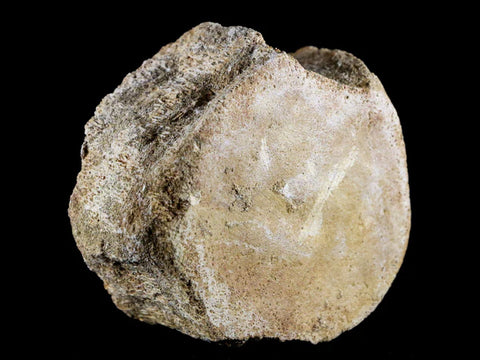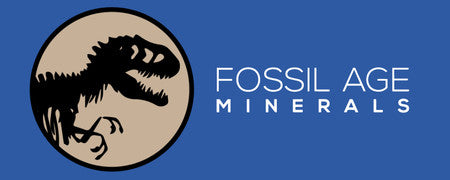Plesiosaurus, a genus of extinct marine reptiles, thrived during the Early Jurassic period. Its existence is known through the discovery of nearly complete skeletons in the Lias of England. This fascinating creature is characterized by its small head, long, slender neck, broad turtle-like body, short tail, and two pairs of large and elongated paddles.

Plesiosaurus is considered a typical member of the order Plesiosauria and represents an early example of this group. While the genus of Plesiosaurus fossils is associated with the species Plesiosaurus dolichodeirus, other species once attributed to it, such as P. brachypterous, P. guilielmiimperatoris, and P. tournemirensis, have been reclassified under new genera like Hydrorion, Seeleyosaurus, and Occitanosaurus.
The significance of Plesiosaurus in paleontological history is notable. The first complete skeleton of Plesiosaurus was discovered by renowned paleontologist and fossil hunter Mary Anning in December 1823 within Sinemurian-age rocks of the lower Lias Group. While Henry De la Beche and William Conybeare had assigned the species name two years earlier, in 1821, based on less complete remains, Anning's finds became the holotype. The findings of Plesiosaurus generated great interest in 19th-century England, as it was one of the first "antediluvian reptiles" to be unearthed.

The name Plesiosaurus, meaning "near lizard," was coined by Conybeare and De la Beche to distinguish it from Ichthyosaurus, which had been discovered earlier in the same rock strata. This genus became the archetypical representative of Plesiosauria and played a major role in establishing the order. The type species, P. dolichodeirus, was formally described by Conybeare in 1824 based on Anning's original discoveries.
Quick Facts About Plesiosaur Fossils
Here are ten intriguing facts about Plesiosaurus:
- Plesiosaurus inhabited the Earth approximately 200 to 66 million years ago, spanning the Jurassic and Cretaceous periods.
- These marine reptiles were of considerable size, with some species reaching lengths of up to 11 meters (36 feet).
- Plesiosaurus possessed a distinctive body structure characterized by a long neck, compact body, and four flippers, resembling a fusion of a turtle and a snake.
- Their remarkably flexible necks allowed for agile movements underwater, enabling them to capture prey swiftly.
- Plesiosaurus boasted specialized dentition, featuring sharp, pointed teeth that pointed to a diet primarily comprising fish, squid, and other small marine organisms.
- Adapted to an aquatic lifestyle, Plesiosaurus spent most of its life in the open ocean.
- Viviparous reproduction, where live young are born rather than hatching from eggs, was likely the reproductive strategy employed by Plesiosaurus.
- Plesiosaurus was part of a diverse marine ecosystem, coexisting with other remarkable marine reptiles such as ichthyosaurs and mosasaurs.
- Plesiosaurus fossils have been unearthed in regions worldwide, including Europe, North America, and South America.
- Plesiosaurus met its demise around the same period as the non-avian dinosaurs during the Cretaceous-Paleogene extinction event, marking the end of an era.
The Anatomy Of The Plesiosaur Fossils
The anatomy of Plesiosaurus fossils unveils a captivating tapestry of features that facilitated the thriving existence of these marine reptiles in ancient oceans. Let us delve into the intricate details of their anatomy. Plesiosaurus boasted a comparatively modest-sized head adorned with sharp, conical teeth, perfectly suited for seizing prey. However, its most distinctive attribute was its elongated and slender neck comprising numerous elongated vertebrae. However, this remarkable neck bestowed Plesiosaurus with unparalleled flexibility, enabling graceful movement and effortless maneuverability through the water.

The body of Plesiosaurus exhibited a remarkable breadth and barrel-like contour. Encased within its ribcage were vital organs while also imparting essential structural support. However, this robust body structure hints at Plesiosaurus' profound adaptation to an aquatic lifestyle, enhancing buoyancy and stability in its marine habitat. Plesiosaurus possessed four paddle-like flippers, two on either side of its body. These flippers, adaptations of its forelimbs, featured elongated bones that provided a framework for a web of skin. These specialized appendages served as propulsive mechanisms, propelling Plesiosaurus through the water with elegance and efficiency while facilitating directional control.
While relatively shorter compared to its elongated neck and body, the tail of the Plesiosaurus played a vital role in generating lateral movements and aiding in steering. Although less prominent than its flippers, the tail was essential for maintaining equilibrium and precise control during locomotion. The exact appearance of Plesiosaurus' skin remains uncertain; however, it is believed to have possessed a smooth texture, potentially adorned with scales akin to those found in contemporary reptiles. This integumentary covering protected against abrasions and potential threats from predators, ensuring Plesiosaurus could navigate its watery domain unimpeded.
The exploration of Plesiosaurus fossils has extended beyond external structures, affording invaluable glimpses into its internal anatomy. The analysis of fossilized bones and teeth offers insight into growth patterns, reproductive strategies, and potential physiological functions, enabling a deeper understanding of the life and adaptations of these remarkable creatures.
The Plesiosaurus Teeth Structure
Plesiosaurus possessed sharp, conical teeth that were well-suited for capturing and gripping prey. The Plesiosaurus teeth varied in shape and size along the jawline, with larger and more robust teeth located towards the front of the jaws, gradually becoming smaller towards the back. This tooth differentiation likely aided in securing and holding prey securely during feeding.
Plesiosaurus had a heterodont dentition, meaning that different types of teeth were present in its jaws. Towards the front of the jaws were larger, robust teeth known as "caniniform". These caniniform teeth were designed for seizing and piercing prey. Towards the back of the jaws, smaller, needle-like teeth called "intermediate" or "postcaniniform" were present. These teeth were adapted for grasping and holding onto slippery prey items.
Like most reptiles, Plesiosaurus teeth were continually replaced throughout their lives. New teeth would grow and develop to replace worn or lost ones, ensuring a functional dentition for capturing prey. Plesiosaurus teeth were composed of dentin and enamel, similar to the teeth of modern reptiles. Dentin formed the majority of the tooth structure, providing strength and support. Enamel, the outermost layer of the teeth, was exceptionally hard and served as a protective coating, enhancing the teeth's ability to withstand mechanical stresses during feeding.

The sharp, pointed teeth of Plesiosaurus indicate a diet predominantly comprising fish, squid, and other small marine organisms. The teeth were well-suited for gripping and puncturing the soft tissues of their prey, facilitating efficient feeding and consumption. Examination of Plesiosaurus tooth fossils reveals wear patterns that provide insights into their feeding behavior. Patterns of wear on the teeth can indicate the type of prey consumed, the method of feeding, and potentially even the ecological niche occupied by different species of Plesiosaurus.
The Hunting Behaviour Of The Plesiosaurus
Plesiosaurus was at home in the water, spending most of its existence in the vast ocean. Its streamlined body, accompanied by a long and graceful neck and powerful flippers, showcased its prowess in swimming and navigating the watery depths with elegance and efficiency. Plesiosaurus was a formidable predator, likely occupying a prominent position in the marine food chain. Equipped with sharp, conical teeth and robust jaws, it relished a carnivorous diet, feasting on fish, squid, and other small marine creatures. With its teeth and powerful bite, it would have skillfully captured and subdued its prey.
After thoroughly researching Plesiosaurus fossils, an elongated neck and streamlined body allowed for agile movements underwater. Its flexible neck, and powerful flippers granted it the ability to swiftly navigate through the depths, adeptly pursuing prey and effortlessly adapting to its aquatic surroundings. While the specifics of social behavior in Plesiosaurus remain elusive, certain fossil discoveries suggest groupings or aggregations of individuals. These intriguing findings hint at potential social interactions, such as cooperative hunting, courtship rituals, or shared resting areas.
Plesiosaurus is believed to have exhibited viviparous reproduction, giving birth to new offspring rather than laying eggs. However, this implies that these ancient reptiles cared for their developing offspring internally, suggesting the presence of parental care and a sophisticated reproductive strategy. Although we lack direct evidence of vocalization, it is conceivable that Plesiosaurus utilized sounds or body language for communication purposes. These behaviors may have served diverse functions, such as attracting mates, asserting territorial boundaries, or engaging in social interactions.
Different species of Plesiosaurus fossils likely occupied distinct ecological niches within the ancient marine realm. Variations in tooth morphology and body proportions among species indicate adaptations for specific feeding preferences or specialized habitat utilization, highlighting these creatures' remarkable diversity and adaptability.
Paleoecology Of The Plesiosaurus
Plesiosaurus was primarily a mollusk eater, relying on clams and snails as its main food source. However, it is believed to have also consumed belemnites, fish, and prey. Its jaw structure, with a distinctive U-shape and sharp teeth, would have functioned akin to a fish trap, efficiently capturing and securing its prey. The reptile propelled itself through the water using its paddles, as its relatively short tail provided limited assistance in propulsion. During pursuits, the neck of Plesiosaurus may have acted as a rudder, aiding in navigation.
Reproduction in Plesiosaurus involved giving birth to live young in the water, a behavior akin to sea snakes. It is speculated that the offspring of Plesiosaurus may have initially resided in estuaries before venturing into the open ocean. The elongated neck found in Plesiosaurus fossils was advantageous in many ways and may have posed challenges when accelerating swiftly. Any curvature in the neck could have caused turbulence, hindering rapid movement. Consequently, to achieve effective acceleration, Plesiosaurus likely had to keep its neck straight, which may have made hunting more arduous. As a result, these creatures possibly adopted a strategy of patiently waiting for prey to approach rather than actively pursuing it.
Get Authentic Plesiosaur Fossils Today!
The fossils of Plesiosaurus provide us with a glimpse into the behavior, anatomy, and ecological role of these ancient marine reptiles. With their streamlined bodies, flexible necks, and sharp teeth, Plesiosaurus was a formidable predator, adept at capturing a variety of prey. Their viviparous reproduction and potential social interactions hint at complex behaviors. While their long neck may have posed challenges during acceleration, these creatures likely adapted their hunting strategies to lie in wait for unsuspecting prey.
Plesiosaurus remains an enduring symbol of the marvels of prehistoric life and the intricate dynamics of ancient marine ecosystems. Are you seeking one of the best dinosaur fossil at a reasonable price? You can connect with Fossil Age Minerals, your one-stop store for all kinds of fossils carefully preserved to deliver the best quality to the collectibles. With us, you can dive into the exciting details of dinosaurs. Drop us a line for more.


